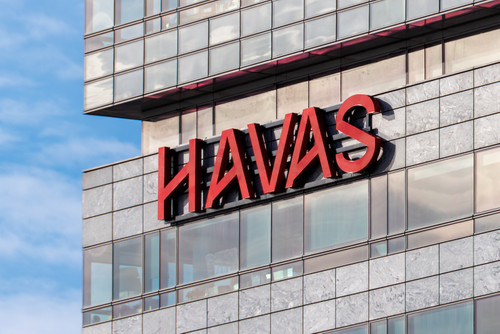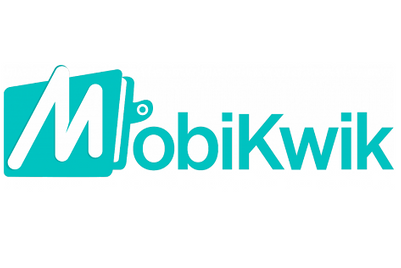Does the ‘flash sale’ concept work better to introduce a product into a market? In what other context can this work well? Will a discount / special offer be a requisite for flash sales beyond launch?
Sunil Raina (SR): Flash Sales are based on the marketing technique of scarcity perception which works well in certain situations and with certain segment of the consumers. Using this strategy for the first time, surely creates a lot of hype and curiosity around the brand and the product. However, this method as an ongoing technique eventually leads to diminishing returns.
Online has now become an important sales channel in India. Companies use various channels like general trade, organised trade, B2B etc to ensure availability of its products to a larger base. Online has emerged as a preferred channel to buy products from for a certain segment of customers, hence it is only natural for companies to ensure availability on this platform as well. Online channel has the advantage of reach and range. It has reach in areas where distribution is weak and can also make a full product range available due to centralised delivery.
Saurabh Srivastava (SS): I think the flash sale concept does work well to introduce a new product into a market as it gives a fillip to the early adopters to buy the product. The discounted price also tempts a lot of customers who otherwise may have not thought about buying the product, to try it out. A larger base of initial adopters is always good for a brand as their feedback can spur a lot of other users to try the product out, going ahead. It also helps build ‘exclusivity’ for the product and the brand in the minds of customers.
Even for new brands, the concept makes sense as the lower price point induces those sitting on the fence to try the product out. Having said that, one disadvantage of a flash sale, especially for new brands is that customers may label them as a lower priced brand itself if a large range is made available in a flash sale. It is important to restrict flash sale to a few selected products.
Flash sale can be an effective technique for unloading seasonal merchandise. Reuters has reported that during the 2012 holiday shopping season, e-commerce retailers that utilised flash sales grew twice as fast as online retailers that decided not to employ flash sales during the same time period.
It can also be an effective strategy when the demand for a product outpaces supply. In such cases, not only can it help create brand value, it also becomes an effective distribution technique. An example is how Xiaomi has used flash sales to build a massive fan following for its products in the country.
I think this depends upon the product. If the product is highly coveted, a discount or special offer may not be needed as the customers will anyways want to be the first to buy it. On the other hand, if one is introducing a new product /brand, a discount will always help in attracting more customers and making them take the buying decision quickly.
Most portals make registrations mandatory before participation. What’s the purpose of this, besides providing an estimate and control on response volume?
SR: Pre-launch registration helps brand gauge the interest level of the customers, before the product goes on sale. It’s also a tool to create hype while building up to the launch and drive more traffic. This kind of sales strategy gives brand access to crucial information about their TG profile, which can help brand track their marketing spending, and also be more effective in reallocating their resources.
SS: The purpose is basically to gauge demand for the product. It helps brands measure the interest levels in their products and take early marketing action for any course connection needed. Also, it helps plan inventory cycles better. In case the product has a huge fan following, prior registration ensures adequate technology infrastructure is deployed to ensure there is no mishap on the day of the event.
Does limiting it to pre-registered participants curtail potential impulse purchases?
SR: The idea behind flash sale is to create a sense of scarcity and exclusivity in the minds of consumer and pre-registration is a part of the plan. What seems to be curtailing impulse purchase decision is actually leading to demand generation for the next sales batch.
SS: Yes it can. However, the benefits in this case far outweigh the losses I guess.
Some brands/portals engage in multiple flash sales for the same product (on different dates). In general, would there be diminishing interest with each sale? How can this (interest) be kept up?
SR: For any flash sale to work, it is most important for the brand to build trust with the consumer and create engaging online experiences. If done correctly, it gives consumers a reason to come back to the brand and even tell their friends about their experience.
However, if the experience is not good or the product does not match the expectation of the customers, the virality of negative publicity could also be very high and damaging to the brand. So the key to survive in this game is to provide a consistent, high quality product experience and live to the product promise made through marketing channels.
SS: It depends upon how highly the product benefits are perceived by the customers. Let’s say 100 customers are interested in a gadget that will be sold for the first time via a flash sale. On the sale day, let’s assume only 20 are able to get it. The choice for the remaining people is either to wait for the next sale or to buy a substitute. So if there is a substitute available that offers very similar benefits, there is a chance of diminishing interest as some customers may end up buying that instead of waiting for the next sale.
However, let us assume the company indulges in some marketing or some really positive reviews come out for the product based on first usage. In this case, a lot of new customers may want to buy it, leading to even more demand instead of diminishing interest. I think the best way to ensure the interest does not diminish is to ensure customers see the product as ‘different’ and ‘more valuable than competitors’. Marketing can help in that.
Do these sales dilute the efficacy of other channels when the product rolls out on them?
SR: The rise of the online-only brand marks a new generation of buyers who spend most of their time online, are tech- savvy and can comprehend the product offerings by comparing and reading about them online. As more brands opt for online-only strategy, e-tailing will begin to rival traditional sales channels. But this section of buyers still represents very small fraction of total market size and hence the traditional retail is not going out of focus anytime soon.
SS: It is bound to. All the customers that bought the product via a flash sale would have otherwise bought it from the regular channels. So yes, the efficacy of other channels definitely goes down. Having said that, it also depends upon the additional demand that the product is generating. If the product is heavily in demand, the efficacy will not be impacted much.
Can flash sales work across all categories? If not, what categories/products can this work for?
SR: Flash sales work better in categories where the new product launches by brands are not very frequent. It works much better in technology products as consumers make their choice based on the advertised specifications. Smartphones, for instance, are transparent to consumers when it comes to ingredient technologies used, hence makes it easier for consumers to make an informed choice.
However, there is risk of diminishing returns if the flash sales method id used frequently as that goes against the very basis of this marketing tool which is ‘scarcity perception’.
SS: I think flash sale will work better in categories that are low on involvement or where the customer has already made up his or her mind to buy the product. Some examples can be not so expensive gadgets, fashion, accessories etc. Products that require a high level of involvement may not sell well through flash sales unless a large number of buyers have already made up their mind to buy the product.
.jpg&h=570&w=855&q=100&v=20250320&c=1)
.jpg&h=570&w=855&q=100&v=20250320&c=1)


.jpg&h=334&w=500&q=100&v=20250320&c=1)
.jpg&h=334&w=500&q=100&v=20250320&c=1)

.jpg&h=334&w=500&q=100&v=20250320&c=1)




.jpg&h=334&w=500&q=100&v=20250320&c=1)






.jpg&h=268&w=401&q=100&v=20250320&c=1)
.jpg&h=268&w=401&q=100&v=20250320&c=1)
.jpg&h=268&w=401&q=100&v=20250320&c=1)
